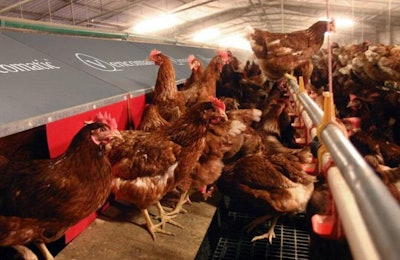
Recently, the New South Wales (NSW) Labor Party decided not to move forward with a 10-year phase-out of conventional cage housing for egg-laying hens. In response, 25 protesters last week stood outside the office of Jenny Aitchison, who is a Maitland Member of Parliament, to encourage her to change her position.
"Labor has backflipped on this, they had committed to a long-term phase-out to ensure that there would be a transition period to allow farmers to change their ways," Animal Justice Party's Newcastle Hunter Regional Group leader Darren Brollo said in an article from the Maitland Mercury.
Brollo further explained in the article that the Animal Just Party group believes that with enough pressure, the group might be able to get the decision overturned. However, Aitchison commented within the article that she felt phasing out the production of caged eggs in NSW was unfair to the farmers in that region because other Australian egg farmers could sell conventionally produced eggs into their market.
She added, "The other thing is that we need low-cost sources of protein in our diets, and eggs are one of those."
It's interesting to me that as many pieces of state legislation within the U.S. are pushing for 100% cage-free egg production, other regions in the world are fighting animal rights activists to stop it.
Aitchison made the point that many of us in the U.S. have been saying while still questioning if people will buy cage-free eggs at the premium cost. The Supplemental Nutrition Assistance Program (SNAP) aided roughly 40 million Americans in 2018 – which means just like the region Aitchison represents, much of America still needs access to cheap protein.
I think it would be interesting to stand in a grocery store for an hour and see what the ratio of caged to cage-free egg purchases is for the general consumer. The Maitland Mercury article noted that in that region, the consumption of caged eggs is down from about 75% to 45%. I am sure the animal rights groups are happy to see the shift in consumer trends, but I wonder if the drop in conventional sales is equivalent to the increase in cage-free sales?
As the global egg industry moves forward, I will be interested to see what new trends are demanded and how soon they evolve. Especially in the areas of the world that may not be equipped to afford or manage producing an egg that's safe for consumption and still meets animal rights demands.

















